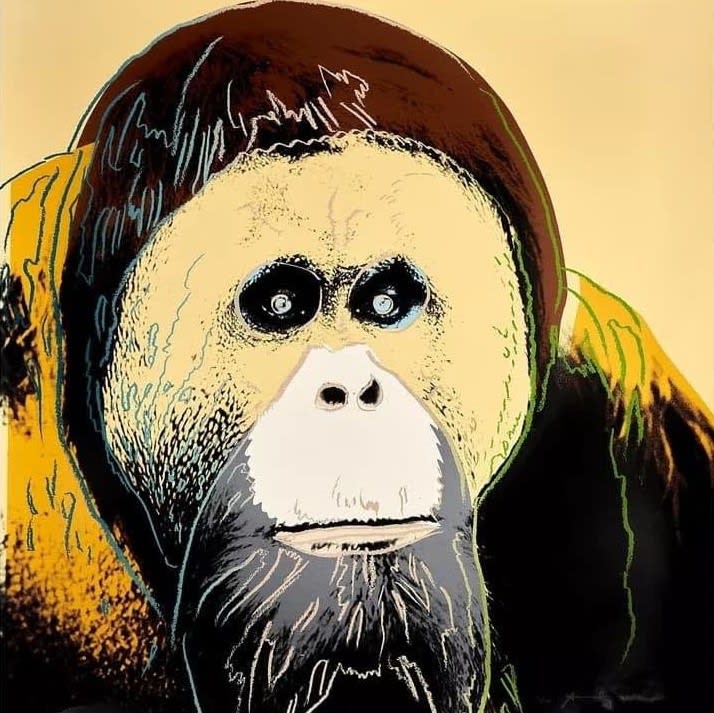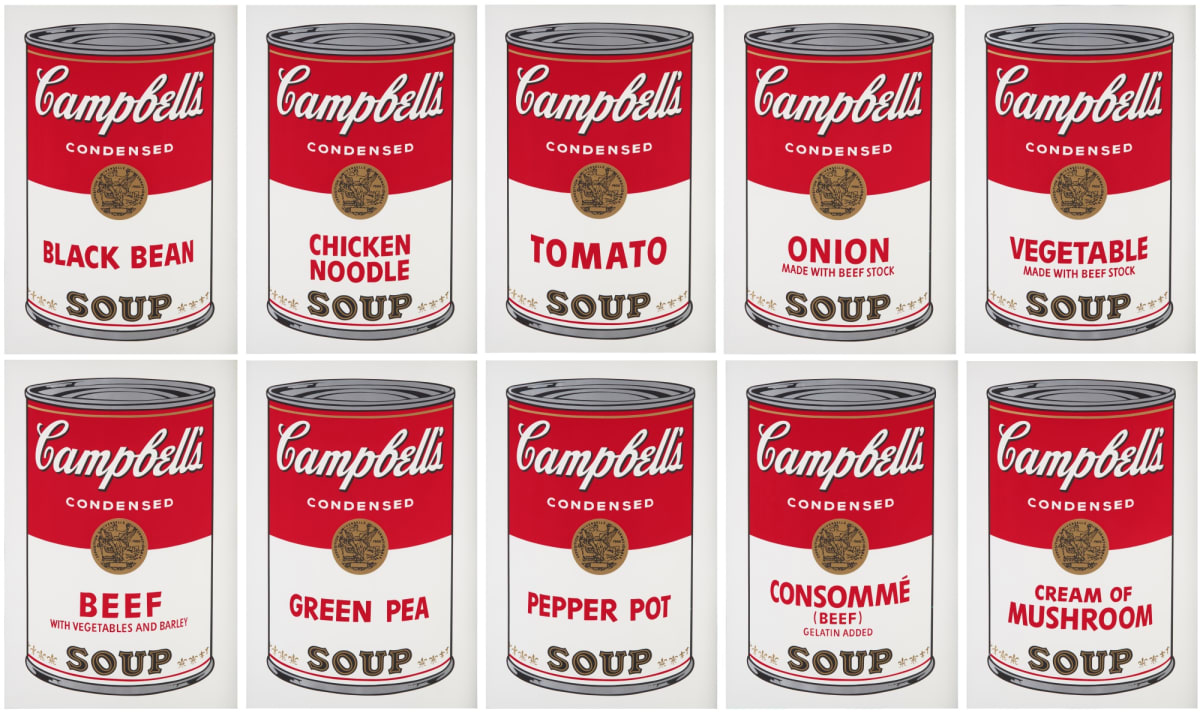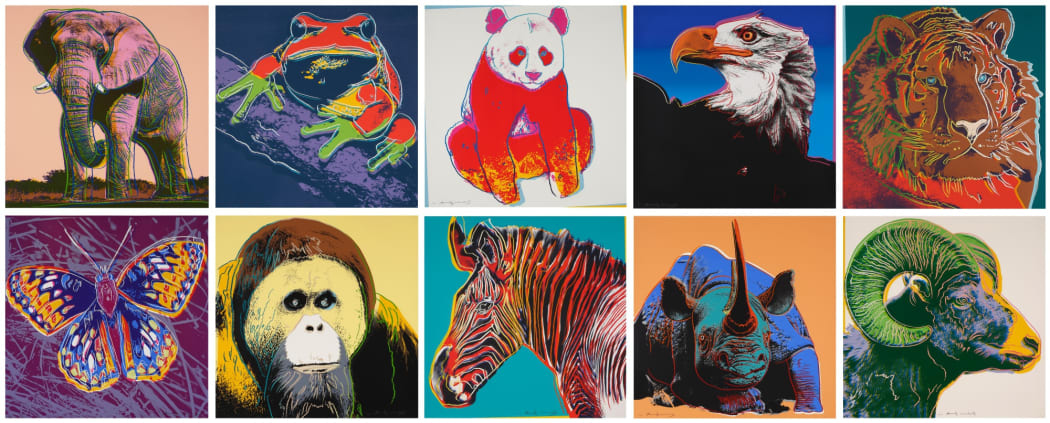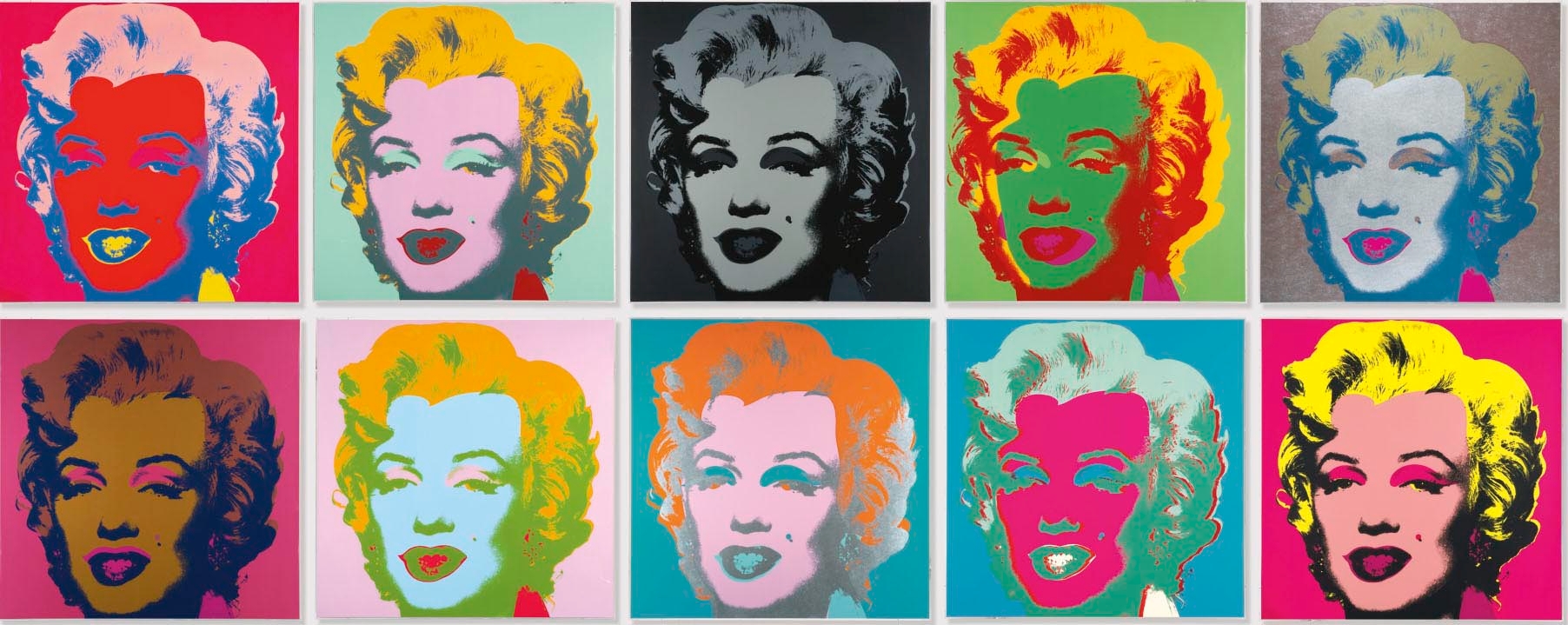
Marilyn Monroe Portfolio
In 1967, Andy Warhol brought to life a timeless portfolio consisting of ten screenprints of Marilyn Monroe, a creation that profoundly resonated within the realms of Modern and Contemporary art. Warhol's Marilyn represents more than a mere depiction of a global icon; it emerges as a standalone symbol, eloquently blending the realms of art and celebrity. The portfolio beautifully exhibits Warhol’s mastery in colour application and image manipulation, yielding portraits that perpetually linger in the aesthetic consciousness.
Deriving inspiration from a publicity still of Monroe from her 1953 film "Niagara", Warhol curated an image that, despite her passing five years prior to the creation of the screenprints, encapsulates a presence that remained vividly imprinted in the media and collective American memory. He meticulously cropped the original image, furnishing viewers with an intimate, close-up encounter with the actress’s countenance. Warhol accentuates and amplifies Monroe’s distinct beauty features - her eyes, iconic beauty spot, and lips - through his lavish employment of colour. The deliberate imperfections in the ink application, seen through overdrawn lips and audacious eyeshadow, perhaps mirror the media's aggressive intrusiveness and the meticulously crafted public persona of Monroe.
Warhol’s repeat rendition of the same Monroe publicity image ten times intertwines both the tangible and metaphorical multiplicities of her being, which were perpetually disseminated through various media. This seriality nods to the myriad facets of Monroe: from Norma Jean, the orphan pre-Hollywood, to Marilyn, the screen siren and beauty symbol, and further into the secluded Marilyn, an entity rife with internal tumult. The suite traverses through this varied spectrum: one iteration (II.24) casts a haunting black and white version, while another (II.23) offers a visually pleasing and balanced headshot in mint green, peroxide blonde, and baby pink. This light-dark dichotomy also visually echoes the joy and sorrow encapsulated by the star’s sudden demise, intertwining her widely celebrated image with an underlying current of vulnerability and sorrow.
Warhol, through his Marilyn Monroe portfolio, has eternally inscribed one of the most celebrated faces in modern history, breathing into a pervasive image a lively spirit that transcends time. His reputation as a paramount portrait artist was undoubtedly cemented henceforth, with Arthur C. Danto acclaiming Warhol for singularly revitalising the practice more than any other artist in his realm.
Explore more information about our Marilyn Monroe portfolio for sale.
Soup Can Portfolio
In 1968, Andy Warhol introduced "Campbell’s Soup I", the first in a series of portfolios that distinctly marries commercial imagery with artistic ingenuity, followed by a second volume in 1969. The collection, now emblematic of Modern art, embraces ten screenprints, each featuring a diverse variant of Campbell’s soup.
The inception of Warhol’s Campbell Soup cans, anchored firmly within the Pop Art movement, reverberated through the artistic community upon its initial exhibition in 1962 at the Ferus Gallery under the name "Campbell’s Soup Cans". The transformation of a mass-produced item into an art piece audaciously challenged prevailing notions of what constituted artistic expression. Cultural critic Jean Baudrillard expressed that Warhol’s soup cans liberate viewers 'from the need to choose between beauty and ugliness, real and unreal, transcendence and immanence’.
In the "Campbell’s Soup I '' portfolio, Warhol's mastery over the screenprinting process—acquired from printer Floriano Vecchi in 1961—is evident. His red and white colour planes translate the ostensibly mundane soup can into something visually captivating on paper. Despite an overt visual simplicity, Warhol meticulously stylized each can, infusing individuality into his portfolios, known respectively as the 'Ferus' and the 'Mochengladbach' types. The 'Ferus', utilised in his debut exhibition and originating from an advertisement, presents the cans as they might appear on supermarket shelves, mirroring their actual consumer experience.
Remarkably, the soup can imagery remained a vital motif throughout Warhol’s illustrious career, re-emerging in the 1970s in "Reversals and Retrospectives" and in the 1980s in "Campbell’s Soup Box 1985".
Warhol’s initial foray into rendering soup cans can be traced back to his early days as a graphic artist. In the 1950s, Warhol, deeply immersed in the advertisement industry, particularly for shoes and clothing, found a comfort and familiarity in the language of commerce, which would profoundly influence his subsequent art. His journey was not without adversity; contemporaries like Roy Lichtenstein received accolades for their pop art creations while Warhol sought recognition. Anecdotally, a desire for impact and differentiation from artists like Lichtenstein drove Warhol to a pivotal moment in his career. Art dealer Muriel Latow’s suggestion to paint an instantly recognizable item, ‘something like a can of Campbell’s soup’, ignited an artistic revolution, etching a crucial juncture in the trajectory of Warhol’s career.
Explore more of Andy Warhol Campbell’s Soup Can 1 portfolio for sale.

Moonwalk Portfolio
In 1987, Andy Warhol elegantly encapsulated an iconic moment in history through his portfolio "Moonwalk", a set of two screenprints crafted in the year of his demise. Originally conceptualized as a piece for a collection titled "The History of TV", the work diverges from the usual by spotlighting Buzz Aldrin and the American flag on the moon, uniquely through a lens not of the original broadcast but via a photograph captured by Neil Armstrong. The usage of this previously unseen image punctuates Warhol’s legacy of innovative screenprint work.
The "Moonwalk" screenprints are bathed in a vibrant, fluorescent color palette characteristic of the eighties. A discreet, playful touch is visible in the reflection of Aldrin’s visor – Warhol’s initials, imprinting a personal trademark upon the historical image. The holographic visual language utilized in "Moonwalk" mirrors the authentic, televised essence of the original lunar landing, despite its occurrence several decades prior to the artwork’s creation. Situated in the eighties, a period witnessing a burgeoning popularity in television and burgeoning advancements in the TV sector, the themes of space and science fiction pervaded both the film industry and design aesthetics with space-oriented graphics gaining substantial traction. Thus, Warhol’s work, even towards the twilight of his career, remained innovatively congruent with contemporary themes, in this instance, space exploration.
Moreover, Warhol's prints often uniquely intertwined the celebrity of both artist and subject, exemplified by Buzz Aldrin’s reflection in his autobiography, noting, ‘I’ve had a few other brushes with pop-culture fame...Lois and I are fortunate enough to have one of Warhol’s ‘Moonwalk’ prints hanging in our home.’ Warhol's "Moonwalk", thus stands not only as a testament to a pivotal historical moment but also seamlessly blends the artist's signature style with the personal and public domains of celebrity and global events.
Explore more about Andy Warhol’s Moonwalk for sale.

Endangered Species Portfolio
Dubbed "animals in make-up" by Andy Warhol himself, the "Endangered Species" portfolio vivaciously illuminates critical environmental dialogues through its ten brilliantly coloured screenprints, each representing an animal highlighted in the Endangered Species Act. This 1983 collection breaks away from Warhol's famed engagement with media and celebrity, instead, offering a vibrant spotlight on pivotal ecological issues.
Each large-scale print within "Endangered Species" brings a different endangered creature into vivid focus, from a startlingly pink elephant to a pine barrens tree frog depicted in a fusion of red, yellow, and green. Warhol’s notorious mastery over colour amplifies the urgent call to acknowledge and act upon environmental crises. The animals featured, namely the African Elephant, Pine Barrens Tree Frog, Giant Panda, Bald Eagle, Siberian Tiger, San Francisco Silverspot, Orangutan, Grevy’s Zebra, Black Rhinoceros, and Bighorn Ram, were all spotlighted in the 1973 Endangered Species Act. This collection emerges as one of Warhol’s most forward-looking portfolios, strikingly relevant to contemporary environmental conversations.
Originating from dialogues with Ronald and Frayda Feldman, devoted gallerists and ecological enthusiasts, the idea for "Endangered Species" came to life. Despite what may seem like an unexpected liaison between Warhol and ecological themes, his oeuvre did flirt with natural world motifs, evidenced by his "Sunset" series and "Flowers" portfolios. "Endangered Species" boldly diverts from Warhol's norm of media and celebrity, all while preserving his acclaimed graphical style.
Describing the collection as 'animals in makeup', Warhol portrays each endangered species in hyper-stylized colors; for example, a Siberian Tiger is envisaged with striking blue eyes. The stripes of Grevy’s Zebra are presented in a hypnotising, kaleidoscopic formation. Through his dramatic, aesthetic presentation of vital and educational content, Warhol undeniably elevated the visibility and public awareness of pressing issues. The animals, accentuated with flamboyant details and sprawling across their respective canvases, assume an iconic stature reminiscent of other Warholian entities. A notable parallel is drawn to Warhol’s transformation of Marilyn Monroe’s eyeshadow from its natural tone to dazzling pink and blue.
Now, amidst the looming shadows of climate change, the "Endangered Species" portfolio garners both national and global attention, having been showcased in institutions like the National Museum of Wildlife Art, thus continuing to prompt critical reflections on our ecological actions and responsibilities.
Explore more about Warhol’s Endangered Specie portfolio.

For more information on our available Andy Warhol signed prints for sale, contact Andipa Editions via sales@andipa.com or call +44 (0)20 7589 2371 or explore Andy Warhol complete portfolios.

